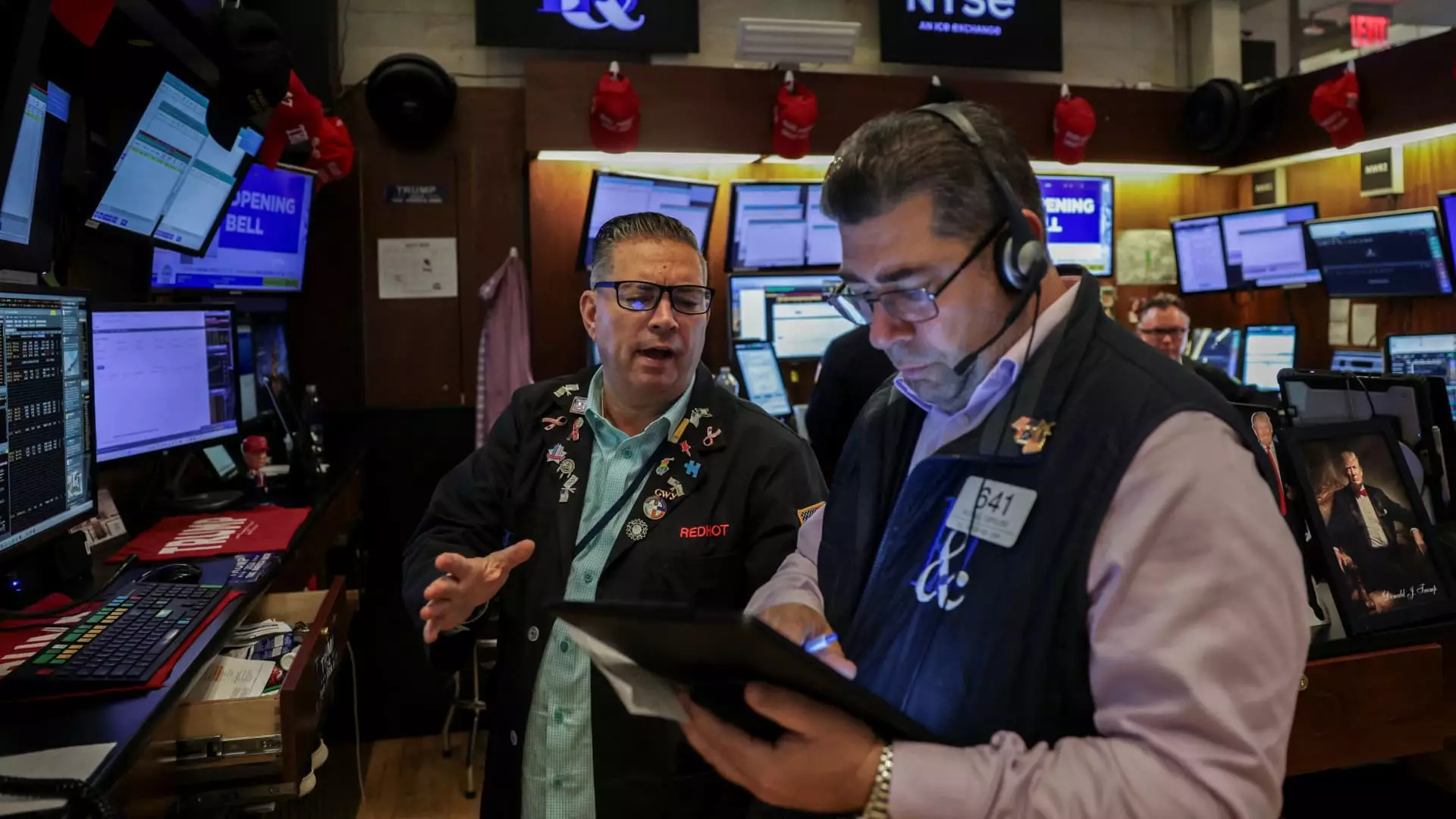The recent tide of market movements reflects a strange paradox—a mix of cautious optimism intertwined with underlying instability. While some corporations are celebrating gains and beating expectations, lurking beneath these headlines is a pervasive sense of fragility. The financial landscape is increasingly resembling a house of cards: buoyed by short-term wins yet vulnerable to the mounting pressures of economic headwinds and geopolitical discord. Opposing narratives clash as the light of corporate earnings temporarily illuminates the otherwise dark clouds of long-term uncertainty, challenging investors to discern whether this rally is a sustainable revival or a fleeting mirage.
Corporate Earnings: An Illusion of Strength?
The recent earnings reports seem to paint a rosy picture on the surface, but a deeper analysis reveals underlying cracks. For instance, giants like 3M and American Express surpassed expectations, showcasing resilient performance in an ostensibly weakening economy. Still, their results are, in part, a product of strategic cost-cutting and accounting levers that mask underlying stagnation. More concerning is the case of Netflix, which despite delivering on revenue, signals a faltering operating margin due to mounting content costs—a clear sign that their growth engine might be sputtering rather than accelerating. This divergence underscores a market still clinging to the illusion of strength, while in reality, companies are grappling with the limits of profitability and competitive pressures.
Geopolitical and Sectoral Shifts: Opportunities or Pitfalls?
The headlines about Chevron’s victory over Exxon in offshore oil assets signify a strategic repositioning that benefits the oil giant, potentially heralding a positive outlook for energy investors. Yet, this triumph also highlights the broader geopolitical risks inherent in resource-dependent markets—risks that can swiftly unravel gains as international tensions and regulatory changes unfold unpredictably.
Meanwhile, the renewed enthusiasm in the crypto sector—reflected by surges in ether and related stocks—raises alarms about speculative excess. Although the passage of crypto legislation in Congress might seem like a regulatory breakthrough, it also exposes the sector to increased scrutiny and volatility, traits that tend to undermine long-term stability. The sector’s recent rally can be perceived as a legacy of hype rather than genuine institutional confidence, a gamble that could backfire as regulatory and market realities clash.
Financial Institutions: Riding or Breaking the Wave?
Regional banks like Huntington Bancshares and Western Alliance exemplify the mixed signals in the financial sector. While they reported slightly better-than-expected earnings, the decision by Western Alliance to unify its divisions under one brand indicates underlying strategic turbulence. Such consolidation efforts imply a recognition of fragility—a need to streamline operations in an environment of rising credit risks and narrowing profit margins.
Similarly, the banking sector faces hurdles from rising interest rates, economic slowdown fears, and regulatory scrutiny. The modest earnings beats should be taken with caution—they may simply represent the last gasp of an aging economic cycle before sharper headwinds arrive. The market’s positive response might be an overreaction, ignoring crucial vulnerabilities that threaten to undermine these institutions’ resilience.
The Illusion of Market Resilience and the Centrist Dilemma
From a center-right liberal perspective, the current market condition exemplifies a delicate balancing act. The market appears to be resilient, backed by corporate earnings and strategic acquisitions, yet this resilience is fragile—dependent on favorable political, economic, and global conditions that could unravel with unexpected shocks.
The recent legislative progress in crypto legislation and the strategic moves by energy giants reveal a complex interplay of innovation and risk. It demonstrates that, despite the optimism, there is a discernible current of caution: policymakers, regulators, and corporate leaders remain wary of overextending. It’s this cautious optimism—balancing a recognition of potential growth with justified skepticism about persistent vulnerabilities—that defines the current sentiment.
If anything, this moment should be viewed as a pragmatic pause rather than a celebration. Markets may continue to oscillate wildly as they grapple with inflationary pressures, geopolitical instability, and structural shifts in global supply chains. The key for policymakers and investors is to foster a prudent approach—supporting growth without ignoring the warning signs that the foundation beneath this so-called recovery is anything but solid.
In conclusion, the latest market movements hint at an illusion of resilience—a temporary calm before the inevitable storm. True stability will depend on a balanced response to economic realities, strategic foresight from corporate leaders, and a cautious stance from policymakers. Only then can the illusion of an unbreakable market be replaced by genuine strength rooted in sustainable fundamentals.

